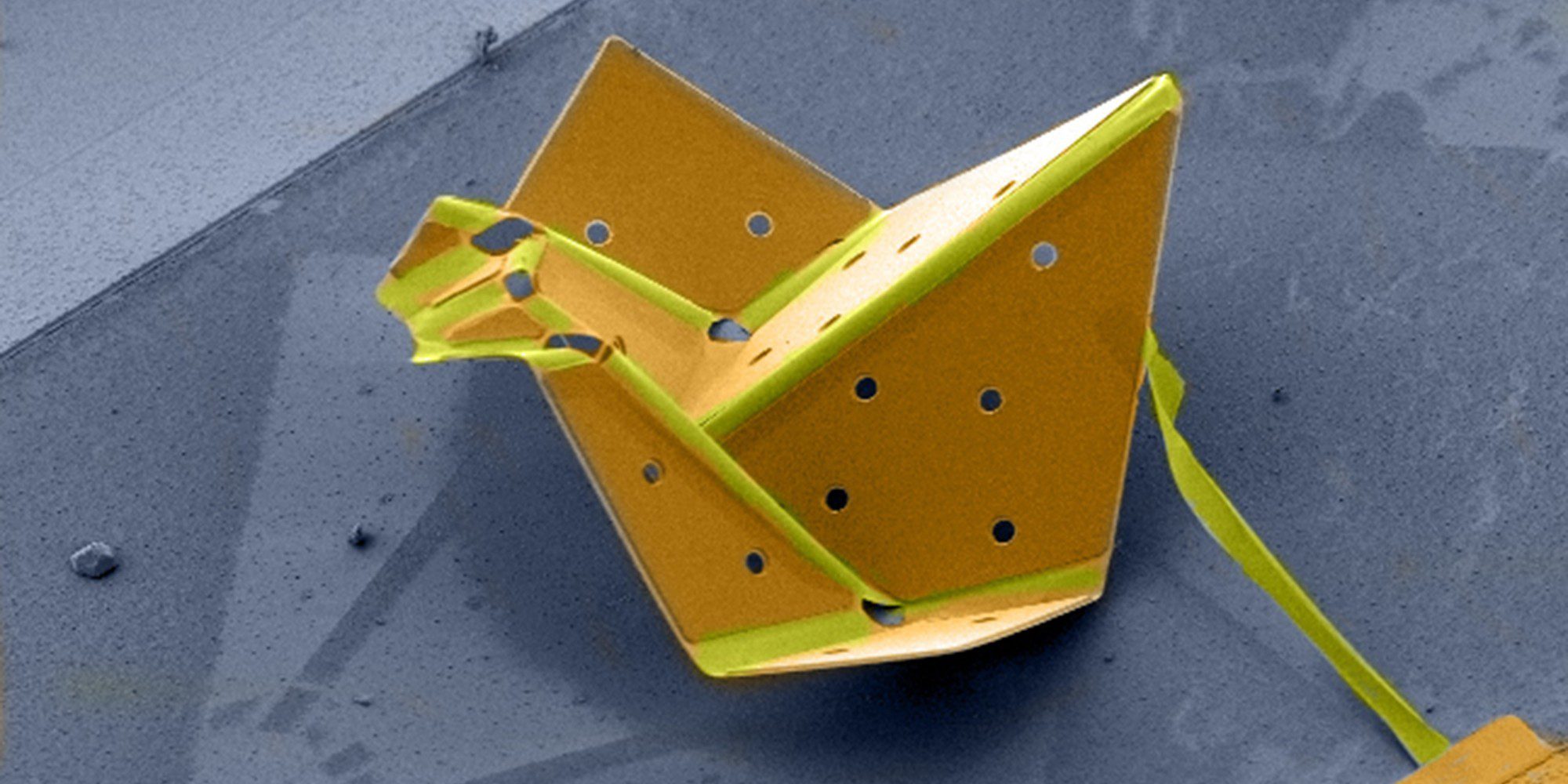RESEARCH TRIANGLE PARK, N.C. — Army-funded researchers created nanosized robots that could enable locomotion, novel metamaterial design, and high-fidelity sensors.
Cornell University researchers created micron-sized shape memory actuators that fold themselves into 3-D configurations and allow atomically thin 2-D materials with just a quick jolt of voltage. Once the material is bent, it holds its shape, even after the voltage is removed.
To demonstrate the technology, the team created what is potentially the world’s smallest self-folding origami bird.
“The research team is pushing the boundary of how quickly and precisely we can control motion at the micro- and even nano-scales,” said Dr. Dean Culver, Program Manager for Complex Dynamics and Systems at Army Research Office, an element of the U.S. Army Combat Capabilities Development Command, known as DEVCOM, Army Research Laboratory. “In addition to paving the way for nano-robots, the scientific advancements from this effort can enable smart material design and interaction with the molecular biological world that can assist the Army like never before.”
“The research may result in future applications 10 to 20 years from now,” he said.
In a peer-reviewed article published in Science Robotics, researchers said this work could make it possible for a million fabricated microscopic robots releasing from a wafer to fold themselves into shape, crawl free, and go about their tasks, even assembling into more complicated structures.
“We humans, our defining characteristic is we’ve learned how to build complex systems and machines at human scales and at enormous scales as well,” said Prof. Paul McEuen, the John A. Newman Professor of Physical Science at Cornell University. “What we haven’t learned how to do is build machines at tiny scales.”
“This is a step in that basic, fundamental evolution in what humans can do, of learning how to construct machines that are as small as cells,” he said.
The researchers’ ongoing collaboration has generated a throng of nanoscale machines and components, each seemingly faster, smarter, and more elegant than the last.
“We want to have robots that are microscopic but have brains on board,” said Prof. Itai Cohen, professor of physics at Cornell University. “That means you need to have appendages that are driven by complementary metal-oxide-semiconductor transistors, basically a computer chip on a robot that’s 100 microns on a side. The hard part is making the materials that respond to the CMOS circuits.”


